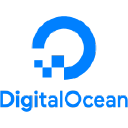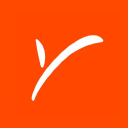How I Built And Grew A Telegram Bot With 1M Users
Hello! Who are you and what business did you start?
My name is Niki Kravchuk, and I'm an indie founder creating several travel startups, including Telegram chatbots AirTrack, HotelBot as well as Manyflights an email subscription service that sends out only the best flight deals.
Today, I'm going to talk about my product called AirTrack. It is a Telegram chatbot designed to search for cheap flights and track their prices. With over 1,000,000 users worldwide, the bot generates $7,000 per month.

Find a problem and a solution. Build and ship your product quickly, even if the first version is not perfect. Avoid adding unnecessary features. Work closely with your users to gather feedback and build a product that people love. Their input is invaluable in...
Sorry, you need to login and/or become a member to view the rest of this content. Free Download163 Million Dollar Solopreneur Business Ideas
Free Download163 Million Dollar Solopreneur Business IdeasDownload the report and join our email newsletter packed with business ideas and money-making opportunities, backed by real-life case studies.
Get The Report Free Download163 Million Dollar Solopreneur Business Ideas
Free Download163 Million Dollar Solopreneur Business IdeasDownload the report and join our email newsletter packed with business ideas and money-making opportunities, backed by real-life case studies.
Get The Report Free Download163 Million Dollar Solopreneur Business Ideas
Free Download163 Million Dollar Solopreneur Business IdeasDownload the report and join our email newsletter packed with business ideas and money-making opportunities, backed by real-life case studies.
Get The Report Free Download163 Million Dollar Solopreneur Business Ideas
Free Download163 Million Dollar Solopreneur Business IdeasDownload the report and join our email newsletter packed with business ideas and money-making opportunities, backed by real-life case studies.
Get The Report Free Download163 Million Dollar Solopreneur Business Ideas
Free Download163 Million Dollar Solopreneur Business IdeasDownload the report and join our email newsletter packed with business ideas and money-making opportunities, backed by real-life case studies.
Get The Report Free Download163 Million Dollar Solopreneur Business Ideas
Free Download163 Million Dollar Solopreneur Business IdeasDownload the report and join our email newsletter packed with business ideas and money-making opportunities, backed by real-life case studies.
Get The Report Free Download163 Million Dollar Solopreneur Business Ideas
Free Download163 Million Dollar Solopreneur Business IdeasDownload the report and join our email newsletter packed with business ideas and money-making opportunities, backed by real-life case studies.
Get The Report Free Download163 Million Dollar Solopreneur Business Ideas
Free Download163 Million Dollar Solopreneur Business IdeasDownload the report and join our email newsletter packed with business ideas and money-making opportunities, backed by real-life case studies.
Get The Report


















